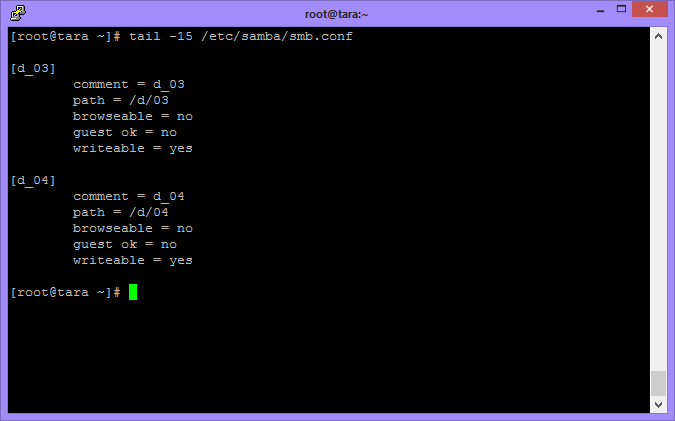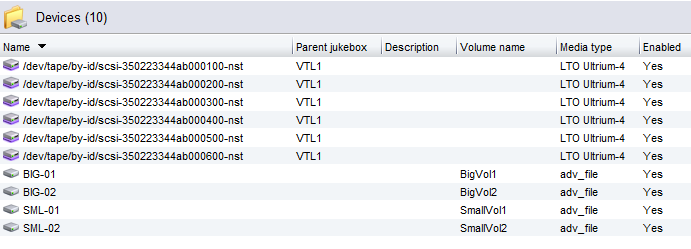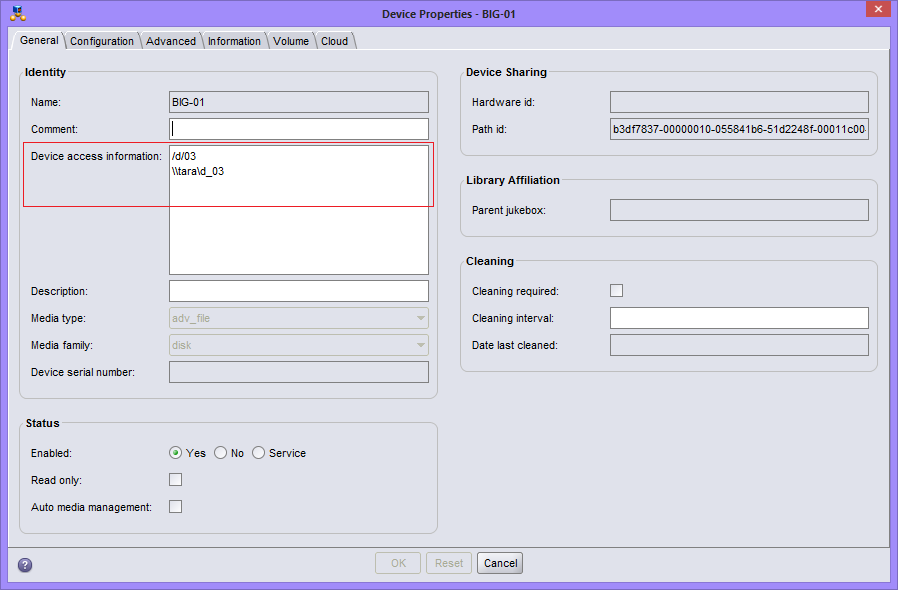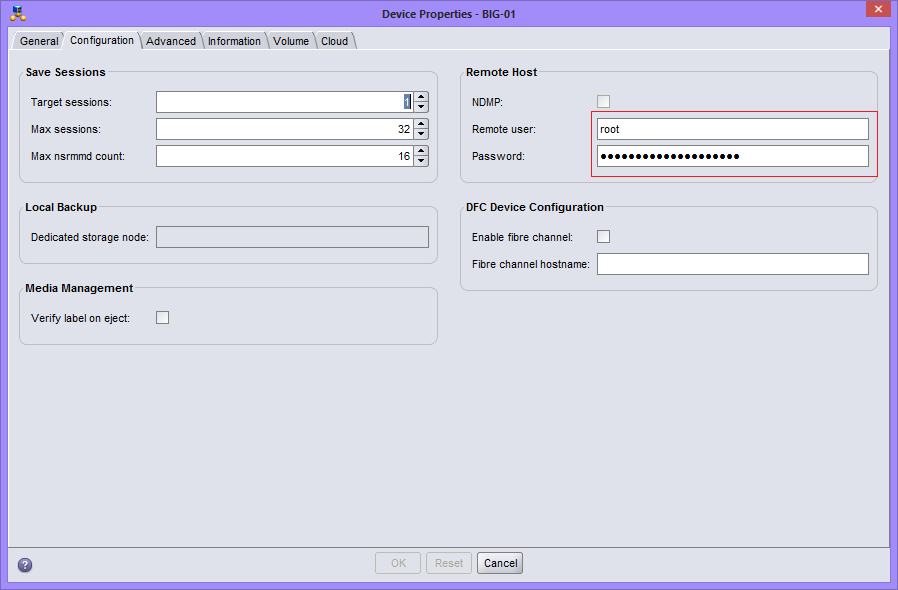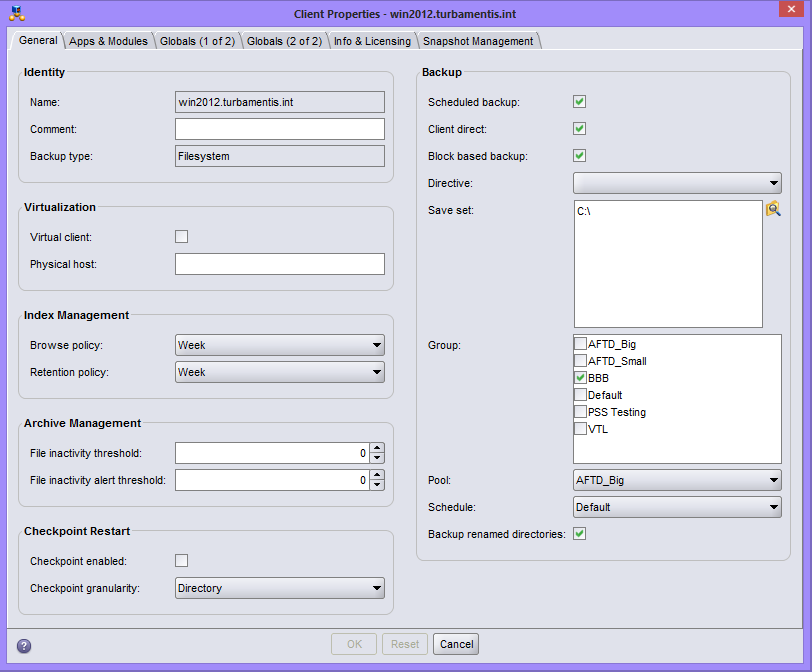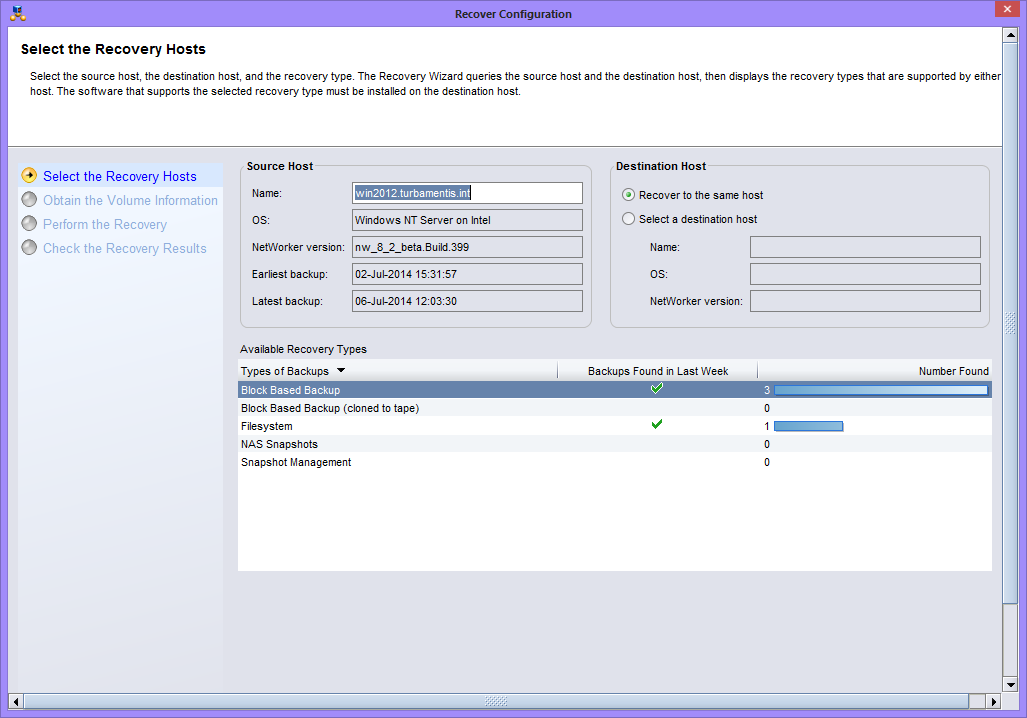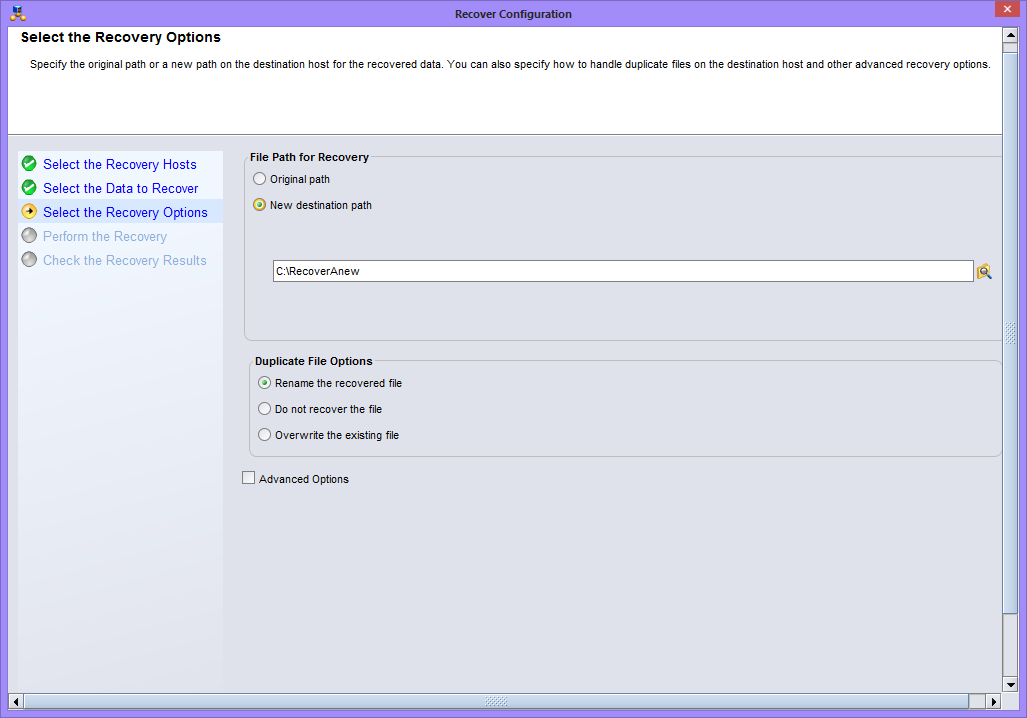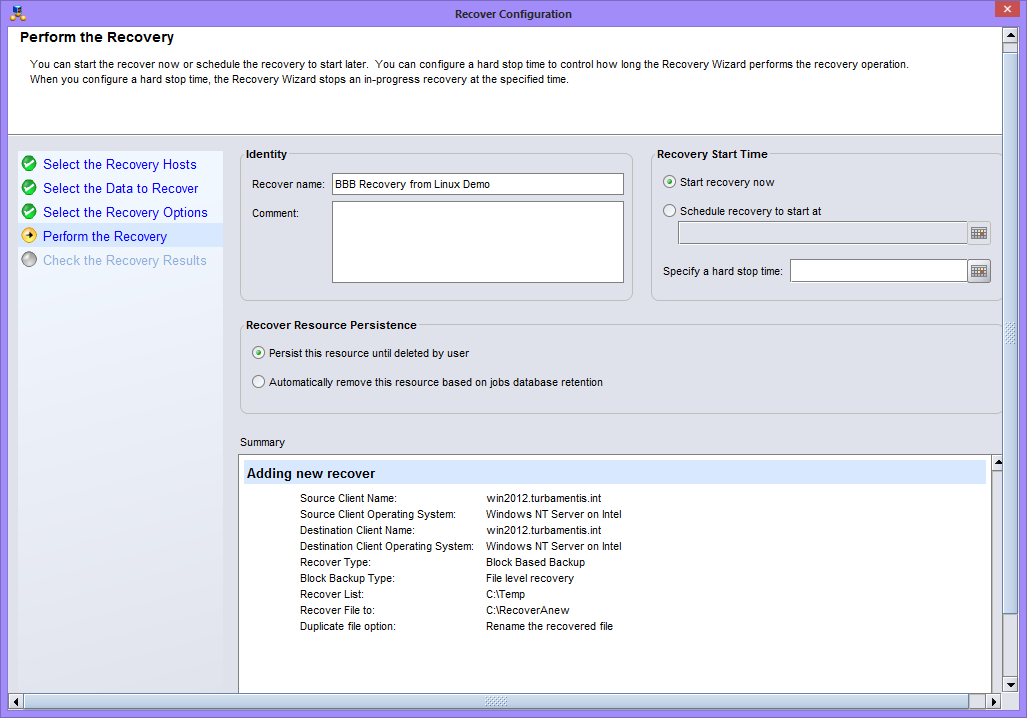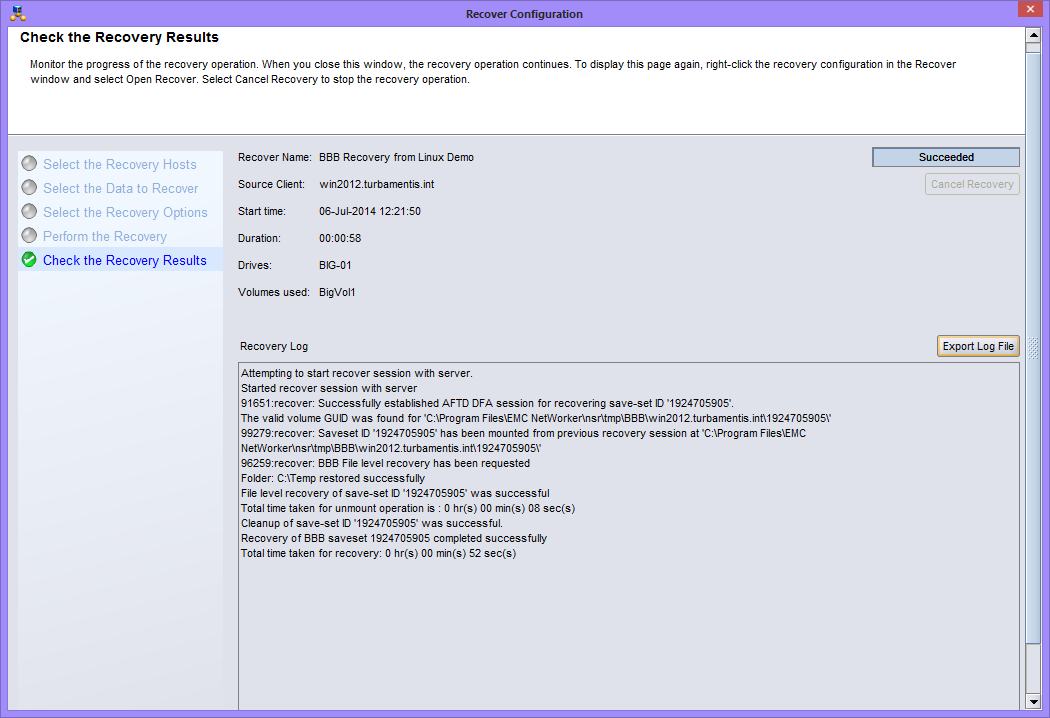One of the new features of NetWorker 8.2 is the expansion of Windows Block Based Backups (BBB) to support additional backup targets. When the feature was originally introduced into NetWorker 8.1, it supported only the following devices:
- Data Domain Boost, and
- Advanced File Type Devices (AFTDs) on Windows systems only.
However, there’s a lot of environments out there that can’t necessarily position a Windows storage node for such backups if Boost isn’t available, and so the logical extension to the solution was to support backing up to AFTDs on Unix and Linux systems, too.
That’s what has been added in 8.2. If you’re using Data Domain, you’ll almost certainly want to do these backups to Data Domain Boost devices, of course. However, if you don’t have Data Domain, then the option of backing up to any AFTD makes Windows BBB much more attractive.
The setup is surprisingly straight forward, but you will need to install and configure Samba on your Linux or Unix host in order to be able to present the AFTD as a CIFS share to the Windows host.
On my Linux lab server, I have several AFTDs – 2 x 150GB devices and 2 x 50GB devices. For the purposes of the setup, I decided to configure the 2 larger AFTDs for CIFS based BBB backups for a Windows 2012 host. The Samba configuration looks like the following:
That provides two Samba shares, one per device. The device at path /d/03 is shared as d_03, and the device at path /d/04 is shared as d_04.
To enable successful sharing, I used smbpasswd to first add, then enable the root user:
# smbpasswd -a root
Followed by:
# smbpasswd -e root
(I picked a reasonably secure password for the root user for Samba which was unrelated to the actual root user account.)
Next, it becomes necessary to edit the device access information for each device:
You’ll need to pick the devices out of the device list that match the paths you’ve configured for Samba access – in my case, they’re the devices ‘BIG-01’ and ‘BIG-02’. Editing the device properties for BIG-01:
In all cases, make sure the owner storage node’s path is listed first in the device access information. In this case, that’s /d/03 for the Linux server itself. The CIFS path to the device is listed for Windows access. Note that using a drive mapping isn’t recommended (and in fact is usually quite painful to configure). So in this case, the CIFS share for /d/03 iis \\tara\d_03, and is listed second.
In addition to specifying the device access information, it’s important you specify the remote username and password that the NetWorker client software will use when accessing the CIFS share from the client. That’s done in the Configuration tab:
With those settings in place, it’s time for the client configuration. This is actually very straight forward:
In actual fact, it’s just a simple case of checking the Block Based Backup checkbox on the main configuration tab of the client. Well, almost. This is a lab environment so that’s all I had to do. There are some considerations in a production environment for BBB, however. For instance, the C:\ drive on a Windows system can get block based backups, but incremental backups will fail – the system is designed, after all, to be used on larger filesystems in specific scenarios (e.g., highly dense filesystems) rather than for every filesystem.
Once the backup has been kicked off, you’ll get reasonably good performance since you’re not working with the client filesystem. For example, even in my lab environment:
Once completed, the BBB save looks reasonably similar to a standard backup, viz:
You’ll note one key exception of course – the BBB is reported as having a file count of 1, since it didn’t actually traverse the filesystem.
Recovery is a very straight-forward process via the NMC Recovery interface. First, select the client you’ll be recovering from, and having done so, choose the option to do a recovery from a Block Based Backup:
Clicking Next will allow you to select what you want to recover: file level, or image level. If file level, you can choose which files you want to recover from:
Having selected the data to recover, going to the Recovery Options allows you to choose to recover the data in place, or to a new directory:
Next, you get to confirm what you’ll be doing and decide when the recovery will be run:
Once you’ve named the recovery, you can click the “Run Recover” button (not shown above) to initiate the recovery. The results should be similar to the following:
At the completion of the recovery, you can check the client to confirm the files have come back, but that’s about all there is to it.
